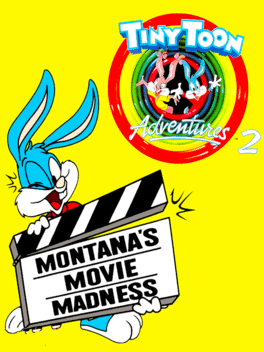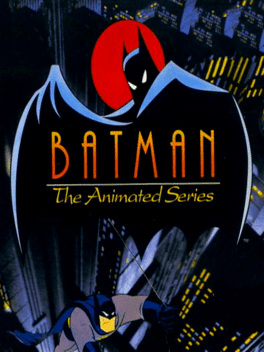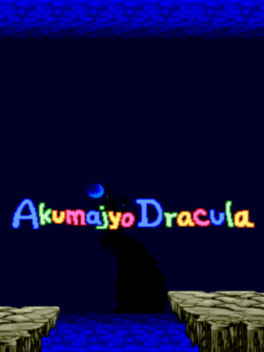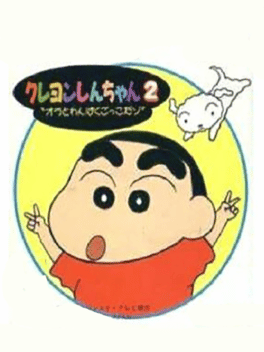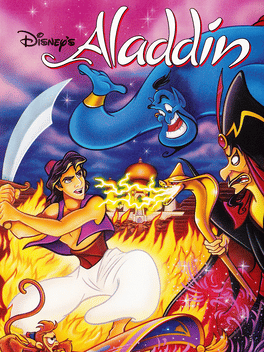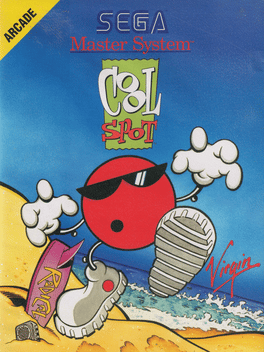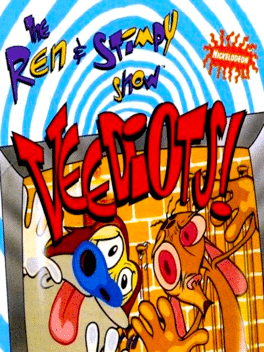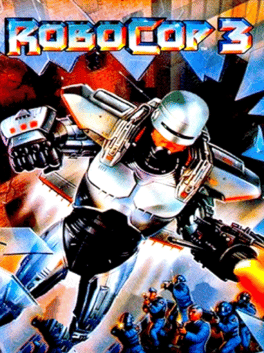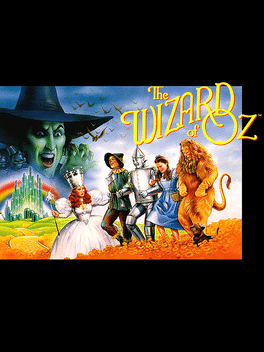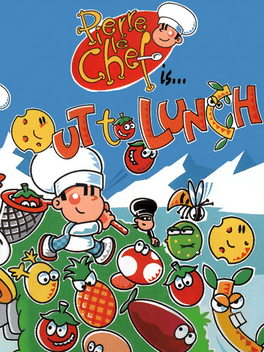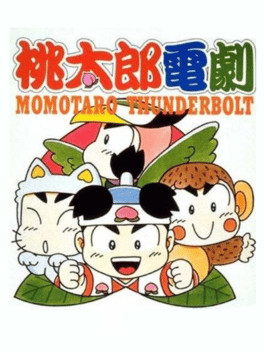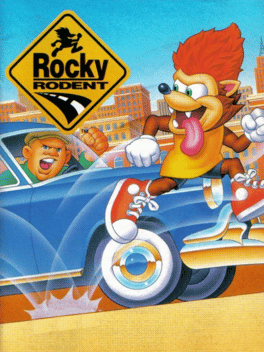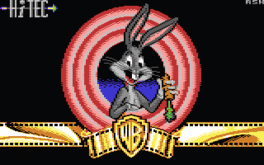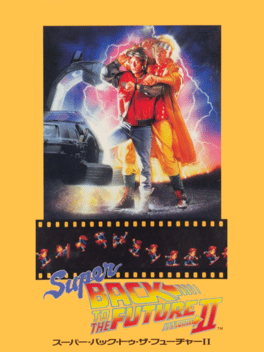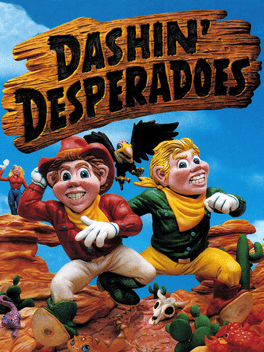New Platform Games - Page 219
-
Tiny Toon Adventures 2: Montana's Movie Madness
1993
star 7Here comes Montana Max the meanest movie maker to ever tarnish the silver screen. He's directed four new flicks that make Buster Bunny look like a villain! To defend his character Buster Bunny must leap into Max's movies and use attack moves like fast dash and freeze kick to change the endings before his career is finished. -
Batman: The Animated Series
1993
star 6.1FROM TV SCREEN TO GAME BOY SCREEN COMES HEROIC CRIME FIGHTING ADVENTURE. Everyone's tuning in to Batman - The Animated Series. Now, for the first time, this hit TV series becomes an intense video game adventure. The Dark Knight and his partner Robin fight Gotham City's most infamous fiends in five original episodes of sizzling crime fighting action. Batman's strategic use of the grappling hook is crucial for surviving the onslaught of evil enemies. And Robin relies on his hang-from-the-ceiling skills to escape certain doom. Both of our heroes possess fists of amazing strength and must try to find weapon power-ups scattered throughout the mayhem. -
Akumajyo Dracula Peke
1993
Akumajyo Dracula Peke is a hidden minigame that came included with Castlevania: Rondo of Blood. It is also known as Stage X "The Fate of Blood Must be Cut with the SUPER CD-ROM² ROM" (血の因縁はSUPER CD・ROM²でなければ断てない, Chi no Innen ha Super CD-ROM² ROM de Nakereba Tatenai). This minigame played instead of Rondo of Blood if the user was using the wrong kind of System Card. The game has been included in all conversions of Rondo of Blood, only differing on the methods of unlocking it between platforms. -
Crayon Shin-Chan: Ora to Wanpaku Gokko dazo
1993
An action platformer for the Game Boy starring the popular anime character "Shin-chan". This is the second installment of the Game Boy Crayon Shin-Chan series. -
Disney's Aladdin
1993
Disney's Aladdin
1993
star 8Disney's Aladdin is a platform video game developed by Virgin Interactive based on the 1992 motion picture of the same name. This version released on Genesis/Mega Drive, DOS, and various PC platforms. -
Cool Spot
1993
Cool Spot
1993
"Cool Spot" is a platform game developed by Virgin Games, starring the 7 Up mascot, Spot. In the game, players control Spot, who can jump and attack by throwing soda bubbles. The primary goal of each level is to rescue other cool spots by collecting a certain number of "spots." The game was a commercial success, selling one million copies, and was praised by critics for its enjoyable gameplay and graphics, even with its prominent product placement. A notable difference in the game existed between its North American and European releases. In Europe, the 7 Up branding was removed and replaced with generic or Virgin-branded items. This was because Fido Dido, not Spot, was the official 7 Up mascot in international markets at the time. The game's success led to a sequel titled "Spot Goes to Hollywood." -
The Ren & Stimpy Show: Veediots!
1993
star 5.4Veediots! lets the player experience four classic episodes of the Ren & Stimpy Show. One is the episode, "The Boy Who Cried Rat", where the player takes control of Ren, who's dressed like a mouse, in which he has to reach the end of a house while avoiding obstacles and enemies as well as Stimpy. Towards the end of this stage, the player must travel through Stimpy's mouth in order to complete the stage by avoiding various pitfalls and obstacles. The second episode is "In the Army" where once again the player takes control of Ren as they travel through an army base, punch at enemies including soldiers, avoid various pitfalls and use various objects scattered throughout the stage in order to advance. The third episode is "Stimpy's Invention", where the player takes control of Stimpy as they must escape a demented laboratory by avoid pitfalls and enemies and collect items to complete the "Happy Helmet" and use it on Ren in order to complete the stage. The final stage is "Marooned" where the player takes control of S -
Sonic CD
1993
Sonic CD
1993
star 7.9Sonic travels to the distant shores of Never Lake for the once-a-year appearance of Little Planet - a mysterious world where past, present, and future collide through the power of the Time Stones that lie hidden within it. Sonic arrives only to find the once beautiful world imprisoned beneath a twisted metallic shell. His arch-nemesis, Dr. Eggman, has come for the Time Stones and with them, will soon have the power to control time itself! In order to put an end to Dr. Eggman’s nefarious schemes, Sonic must use the power of Little Planet to travel through time; breaking Dr. Eggman’s hold over the future by destroying his machines in the past and recovering the missing Time Stones! -
RoboCop 3
1993
-
The Wizard of Oz
1993
The Wizard of Oz
1993
A SNES platformer loosely based on the movie The Wizard of Oz. The game allows the player to play as all three of Dorothy's friends, as well as Dorothy herself. -
Pierre le Chef is... Out to Lunch
1993
star 5.8Pierre le Chef is touring the world preparing his dishes, but his ingredients have escaped and he must capture them. Pierre must watch out for bacteria, insects, and his arch-rival, Le Chef Noir. Noir, an evil chef jealous of Pierre's success, wants to ruin his career by releasing all of his gathered ingredients. -
Plok
1993
Plok
1993
star 6.8Plok is a side-scrolling platform game developed by Software Creations and released for the Super Nintendo Entertainment System in 1993. The game is a traditional platform game starring a character named Plok. -
Momotaro Thunderbolt
1993
Momotaro Thunderbolt
1993
Momotaro Dengeki: Momotaro Thunderbolt is an platformer, published by Hudson, which was released in Japan in 1993. It follows the famous Japanese folklore of Momotaro the peach boy. -
Aero the Acro-Bat
1993
Aero the Acro-Bat
1993
star 5You play as bat Aero, who have to stop the mad scientist Edgar Ektor, who is trying to rid the world of amusement and fun. So you jump through the circus-style levels, using different kinds of machines such as catapults, cannons, bubble machines, platforms, etc., collecting various power-ups such as cheese, soda, keys, clocks, etc. and avoiding lethal obstacles. -
Bonk's Adventure
1993
-
Rocky Rodent
1993
Rocky Rodent
1993
Mafia member Don Garcia has kidnapped Melody, the daughter of the owner of the Rose Restaurant. Rocky Rodent agrees to rescue her in exchange for an all-you-can-eat meal. In order to find Melody, Rocky Rodent has to complete a number of fast-paced, side-scrolling platformer levels. While he can also defeat enemies by jumping on them, his most important weapons are four different hairstyles: His first hairstyle allows him to skewer and throw his enemies, destroy porous blocks as well as cling to and jump up certain ledges. A mohawk can be thrown at enemies like a boomerang or thrown into certain walls, from where it serves as a trampoline. Braids can be used as a grappling hook and a corkscrew-like haircut lets him bounce on his head to jump higher than normal. When Rocky is attacked by an enemy, he looses his current haircut. If he is attacked while not wearing any special haircut, he looses a live. -
Super Back to the Future II
1993
A Japanese platformer game based on the second Back to the Future movie that was published by Toshiba-EMI for the Super Famicom. No official English version exists, but it does have a fan translation. -
Dashin' Desperadoes
1993
Dashin' Desperadoes
1993
Will and Rick were like two peas in a pod or more accurately, two cowpokes in a corral. In other words, these two cowboys were best of friends and nothing could tear them apart that is, until Jenny came to town. Since her arrival, the two best friends have become bitter rivals, each vying for her attention and affection. When Jenny's father decides to send her on a trip around the world, Will and Rick decide to race each other to see which one of them will accompany her. Through deserts, icebergs, shark-infested waters, and even ancient ruins these two go head-to-head in the wackiest race you've ever seen. In split-screen action, you and your opponent (either the computer or a friend) will have to use fancy footwork and a few tricks to be the first to the finish line and win Jenny's heart.
